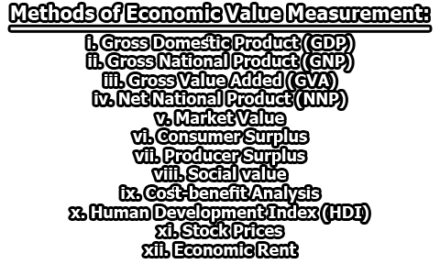The process for determining the exchange rate, or the value of the domestic currency in relation to other currencies, is established through an exchange rate system, also known as a currency system. The choice of a government’s economic system is a crucial component of its industrial policy. Exchange rates are determined by demand and supply. In the rest of this article, we are going to discuss the exchange rate systems used by various governments.
Exchange Rate Systems Used by Various Governments:
Exchange rate systems can be classified according to the degree to which exchange rates are controlled by the government.
1. Fixed Exchange Rate System: In a fixed exchange rate system, exchange rates are either held constant or allowed to fluctuate only within very narrow boundaries.
Advantages of Fixed Exchange Rate System:
- Exporters and importers could engage in international trade without concern about exchange rate movements
- Firms could engage in direct foreign investment, without concern about exchange rate movements of that currency.
- Investors would be able to invest funds in foreign countries, without concern that the foreign currency denominating their investments might weaken over time.
- A country with a stable exchange rate can attract more funds as investments because the investors would not have to worry about the currency weakening over time.
- Countries that attract a large amount of capital flow normally have lower interest rates. This can stimulate their economies.
Disadvantages of Fixed Exchange Rate System:
- There is still a risk that the government will alter the value of a specific currency. It does face the possibility that its government will devalue or revalue its currency.
- A fixed exchange rate system may make each country and its MNCs more vulnerable to economic conditions in other countries.
2. Freely Floating Exchange Rate System: In a freely floating exchange rate system, exchange rate values are determined by market forces without intervention by governments. It allows complete flexibility. A freely floating exchange rate adjusts on a continual basis in response to demand and supply conditions for that currency.
Advantages of a Freely Floating Exchange Rate System:
- One advantage of a freely floating exchange rate system is that a country is more insulated from the inflation of other countries.
- Another advantage of freely floating exchange rates is that a country is more insulated from unemployment problems in other countries
- An additional advantage of a freely floating exchange rate system is that a central bank is not required to constantly maintain exchange rates within specified boundaries.
Disadvantages of a Freely Floating Exchange Rate System:
- A freely floating exchange rate system can adversely affect a country that has high Inflation.
- A freely floating exchange rate system can adversely affect a country that has high unemployment.
3. Managed Float Exchange Rate System: The exchange rate system that exists between fixed and freely floating. Exchange rates are allowed to fluctuate on a daily basis and there are no official boundaries. It is similar to the fixed rate system in that governments can and sometimes do intervene to prevent their currencies from moving too far in a certain direction. This type of system is known as a “managed” float or “dirty” float.
Criticism of a Managed Float System: A managed float system allows a government to manipulate exchange rates in a manner that can benefit its own country at the expense of others. For example, a government may attempt to weaken its currency to stimulate a stagnant economy.
4. Pegged Exchange Rate System: Some countries use a pegged exchange rate arrangement, in which their home currency’s value is pegged to a foreign currency. While the home currency’s value is fixed in terms of the foreign currency to which it is pegged, it moves in line with that currency against other currencies. Some governments peg their currency’s value to that of a stable currency, such as the dollar, because that forces the value of their currency to be stable. First, this forces their currency’s exchange rate with the dollar to be fixed. Second, their currency will move against non-dollar currencies by the same degree as the dollar. Since the dollar is more stable than most currencies, it will make their currency more stable than most currencies.
Limitations of a Pegged Exchange Rate: While countries with a pegged exchange rate may attract foreign investment because the exchange rate is expected to remain stable, weak economic or political conditions can cause firms and investors to question whether the peg will hold. For example, if the country suddenly experiences a recession, it may experience capital outflows as some firms and investors withdraw funds because they believe there are better investment opportunities in other countries.
It is apparent that an exchange rate represents the price of a national currency valued as a foreign currency. The exchange rate plays a significant role in the economy. Because exchange rate fluctuations influence the whole economy, the exchange rate is a major economic factor for growth, stability, and economic development. Different exchange rate systems have different benefits and drawbacks. Governments must decide which system is best for a specific nation and the allotted amount of time. No system can be applied to all countries because they have various political structures and purposes at different times, and no system can fully utilize all the advantages without any disadvantages.
References:
- Madura, Jeff. 2003. International Financial Management. 7th ed. Mason, OH: Thomson/South-Western.
- Frankel, Jeffrey, and Andrew Rose. 2002. An Estimate of the Effect of Common Currencies on Trade and Income. Quarterly Journal of Economics 117 (2): 437–467.

Library Lecturer at Nurul Amin Degree College










